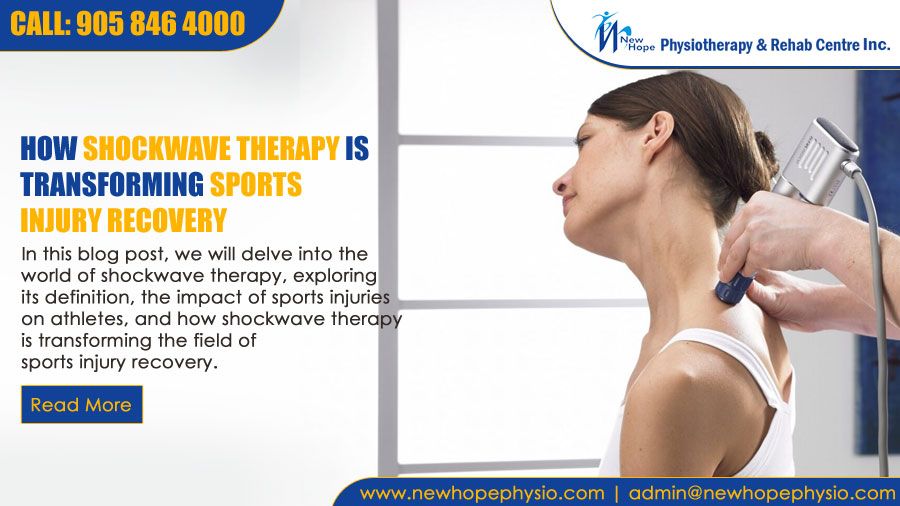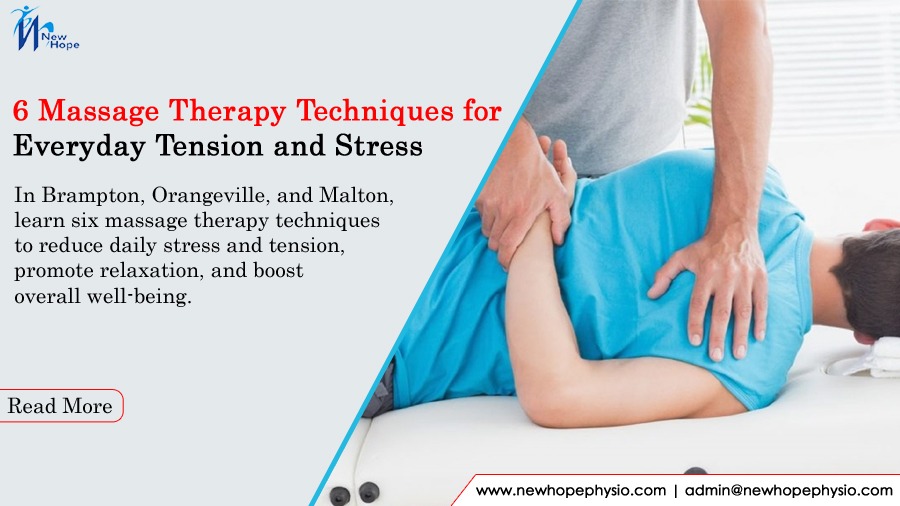
Welcome to the professional physiotherapy clinic
- Home
- Blog
How Shockwave Therapy Is Transforming Sports Injury Recovery
 24 May 2023
24 May 2023
How Shockwave Therapy Is Transforming Sports Injury Recovery
Sports injuries can be debilitating for athletes, impacting their performance, career, and overall well-being. Fortunately, advancements in medical technology have introduced a groundbreaking treatment option known as shockwave therapy. This non-invasive and highly effective approach is revolutionizing sports injury recovery, providing athletes with new hope and faster healing. In this blog post, we will delve into the world of shockwave therapy, exploring its definition, the impact of sports injuries on athletes, and how shockwave therapy is transforming the field of sports injury recovery.
Understanding Shockwave Therapy
To comprehend the transformative power of shockwave therapy, it’s important to delve deeper into its principles and mechanisms. Shockwave therapy utilizes acoustic waves, which are high-energy sound waves, to treat injured tissues. These waves are generated by specialized devices and are directed towards the affected area.
The acoustic waves produced in shockwave therapy can be of two types: focused and radial. Focused shockwave therapy involves concentrating the energy on a specific target area, allowing for precise treatment. This method is typically used for deep-seated injuries or conditions that require focused attention, such as tendonitis or bone fractures.
On the other hand, radial shockwave therapy disperses the energy more broadly over a larger area. It is suitable for treating larger regions or when a wider coverage is needed, such as in cases of plantar fasciitis or muscle strains. The versatility of shockwave therapy, with both focused and radial options, allows healthcare providers to tailor the treatment to the specific needs of the injury and the individual patient.
The acoustic waves generated during shockwave therapy penetrate deep into the injured tissues, delivering mechanical energy to stimulate the body’s natural healing response. These waves create microtrauma within the tissues, triggering a cascade of cellular and biochemical processes that promote healing and regeneration. The mechanical energy also helps to break down scar tissue, increase blood flow, and enhance the production of growth factors, all of which contribute to the healing process.
Furthermore, shockwave therapy has been found to have analgesic effects, meaning it can help alleviate pain. The precise mechanisms behind this pain reduction are still being studied, but it is believed that shockwave therapy can inhibit pain receptors and stimulate the release of endorphins, which are natural pain-relieving substances produced by the body.
The non-invasive nature of shockwave therapy is another notable aspect. Unlike surgical interventions, shockwave therapy does not require incisions or the use of anesthesia, reducing the risks associated with invasive procedures. It is typically performed as an outpatient procedure, allowing athletes to receive treatment without the need for hospitalization or extended stays.
In summary, shockwave therapy utilizes acoustic waves to treat sports injuries effectively. With both focused and radial options available, it provides precise and tailored treatment to meet the specific needs of each injury. By stimulating the body’s natural healing response, shockwave therapy promotes tissue regeneration, breaks down scar tissue, and enhances blood flow. Its non-invasive nature and potential analgesic effects make it a promising treatment option for athletes seeking efficient and holistic recovery.
The Impact of Sports Injuries on Athletes
Sports injuries can have a profound impact on athletes, affecting not only their physical abilities but also their mental and emotional well-being. Understanding the challenges and consequences of sports injuries is crucial in appreciating the significance of effective recovery methods like shockwave therapy.
Athletes invest significant time, effort, and passion into their sports. Sports injuries disrupt their training routines, competitive schedules, and goals. Whether it’s a sprained ankle, torn ligaments, or stress fractures, these injuries can sideline athletes for days, weeks, or even months.
The physical consequences of sports injuries are evident. Athletes experience pain, swelling, restricted movement, and a decline in performance. Injuries can lead to muscle imbalances, decreased strength, and compromised coordination, making it challenging to resume normal training and competition. The frustration and disappointment that accompany these limitations can take a toll on an athlete’s mental well-being.
Moreover, the psychological impact of sports injuries should not be underestimated. Athletes may struggle with feelings of frustration, anger, or helplessness due to their inability to participate fully in their sport. The fear of re-injury or the uncertainty of the recovery process can create anxiety and stress. Additionally, athletes often face pressure from teammates, coaches, and even themselves to return to play as quickly as possible, further adding to the psychological burden.
Beyond the physical and mental impact, sports injuries can have broader consequences on an athlete’s life. For professional athletes, injuries can threaten their careers, sponsorships, and financial stability. For amateur athletes, injuries can disrupt their participation in recreational activities or team sports, affecting their social connections and overall quality of life.
Conventional treatment methods for sports injuries often involve surgical interventions, prolonged immobilization, and lengthy rehabilitation periods. While these approaches may be necessary in some cases, they come with inherent risks, potential complications, and extended downtime. Furthermore, the success and effectiveness of these treatments can vary, leading to uncertain outcomes and prolonged recovery timelines.
This is where the transformative power of shockwave therapy comes into play. By offering a non-invasive and highly effective treatment option, shockwave therapy addresses the specific needs of athletes recovering from sports injuries. It not only promotes faster healing but also helps athletes regain their confidence, restore their physical abilities, and get back to their sport with minimal interruption.
In conclusion, sports injuries have a significant impact on athletes, affecting them physically, mentally, and emotionally. The consequences extend beyond the athletic realm, impacting various aspects of an athlete’s life. Recognizing the challenges athletes face and providing them with effective recovery options is essential. Shockwave therapy, with its ability to accelerate healing, alleviate pain, and restore function, plays a vital role in transforming the recovery process and enabling athletes to return to their sports stronger than ever.
The Transformative Power of Shockwave Therapy
Shockwave therapy has emerged as a transformative treatment option for sports injuries, revolutionizing the field of sports injury recovery. Its unique characteristics and benefits make it a powerful tool in helping athletes overcome their injuries and return to peak performance.
One of the most significant advantages of shockwave therapy is its non-invasive nature. Unlike surgical interventions that require incisions and can involve lengthy recovery periods, shockwave therapy is performed externally, without the need for invasive procedures. This reduces the risks associated with surgery, such as infections, scarring, and anesthesia-related complications. Athletes can undergo shockwave therapy as an outpatient procedure, allowing them to resume their normal activities sooner and minimizing disruption to their training schedules.
Shockwave therapy stimulates the body’s natural healing response, promoting tissue regeneration and repair. The acoustic waves generated during the treatment increase blood flow to the injured area, enhancing the delivery of oxygen, nutrients, and growth factors necessary for healing. This accelerated healing process can significantly reduce recovery time, enabling athletes to return to their sport faster than traditional treatment methods would allow.
Pain reduction is another significant benefit of shockwave therapy. Sports injuries often come with accompanying pain, which can limit an athlete’s ability to perform and impede their recovery. Shockwave therapy has been found to have analgesic effects, helping to alleviate pain and discomfort. It achieves this by inhibiting pain receptors and stimulating the release of endorphins, the body’s natural pain-relieving substances. As a result, athletes experience relief from pain, enabling them to engage in rehabilitation exercises and gradually resume their training more comfortably.
Furthermore, shockwave therapy can help break down scar tissue that may have formed as a result of the injury. Scar tissue can cause restrictions in movement, impair function, and increase the risk of re-injury. The mechanical energy delivered by shockwave therapy disrupts and breaks down scar tissue, promoting the regeneration of healthy tissues. This not only improves the range of motion and flexibility but also enhances the overall healing process.
By providing effective treatment options, shockwave therapy can potentially help athletes avoid surgery altogether. In many cases, surgery is considered the last resort when conservative methods fail to yield satisfactory results. However, shockwave therapy has shown promising outcomes in treating a wide range of sports injuries, reducing the need for surgical intervention. This not only minimizes the associated risks and complications but also saves athletes from the long rehabilitation periods that often follow surgery.
In conclusion, the transformative power of shockwave therapy lies in its non-invasive nature, accelerated healing, pain reduction, scar tissue breakdown, and potential to avoid surgery. This innovative treatment option empowers athletes to overcome their sports injuries, regain their physical capabilities, and return to their sports with reduced downtime. As the field of sports medicine continues to evolve, shockwave therapy stands as a testament to the transformative potential of advanced medical technologies in optimizing sports injury recovery.
Real-life Success Stories
Real-life success stories serve as powerful testimonials to the transformative effects of shockwave therapy in sports injury recovery. Athletes from various sports disciplines have experienced remarkable results and returned to their sports stronger than ever. These stories not only inspire others facing similar challenges but also highlight the effectiveness of shockwave therapy in achieving optimal recovery.
One such success story involves a professional tennis player who suffered from chronic tennis elbow (lateral epicondylitis). Despite undergoing traditional treatment methods, including rest, physical therapy, and corticosteroid injections, the player continued to experience pain and limited mobility. Frustrated with the lack of progress, the athlete turned to shockwave therapy as a last resort. After a series of shockwave therapy sessions, the player experienced significant pain reduction, improved function. And was able to resume training and compete at a high level again.
Another success story involves a marathon runner who developed severe plantar fasciitis, causing excruciating pain in the foot. Conventional treatments, such as orthotics, physical therapy, and anti-inflammatory medications, provided only temporary relief. With the hope of avoiding surgery, the runner decided to try shockwave therapy. After a few sessions, the pain subsided, and the runner gradually increased their mileage without discomfort. The transformative power of shockwave therapy allowed the athlete to continue pursuing. Their passion for running without the need for invasive procedures.
In addition to professional athletes, amateur sports enthusiasts have also benefited from shockwave therapy. Take the case of a recreational soccer player who suffered from chronic Achilles tendonitis. The player had tried various treatments, including immobilization, stretching, and icing. But experienced persistent pain and difficulty in playing the sport they loved. Upon undergoing shockwave therapy, the player noticed a significant reduction in pain and improved function. They were able to return to the soccer field. Enjoying the sport without the limitations that had previously hindered their performance.
These success stories not isolated incidents but representative of the transformative power of shockwave therapy in sports injury recovery. Athletes across different sports and skill levels have witnessed the remarkable healing. And restoration that can achieved through this innovative treatment. Their experiences highlight the effectiveness of shockwave therapy in addressing a range of sports injuries. From tendonitis to stress fractures, and the positive impact it can have on athletes’ lives.
The testimonials and success stories from these athletes serve as beacons of hope for others. Who may be facing similar challenges. They demonstrate that with the right treatment approach. Such as shockwave therapy, athletes can overcome their injuries, regain their strength, and return to their sports with renewed confidence. These real-life examples showcase the transformative potential of shockwave therapy in sports injury recovery, encouraging athletes and healthcare providers alike. To explore this innovative treatment option and embrace its benefits.
Future Directions and Conclusion
As research on shockwave therapy continues to advance, there is immense potential for even greater transformations in sports injury recovery. Ongoing studies explore the optimal utilization of shockwave therapy, its combination with other treatments, and its preventive applications. The future of sports medicine holds exciting prospects as shockwave therapy evolves and becomes more widely accessible.
In conclusion, shockwave therapy is revolutionizing sports injury recovery by providing effective and non-invasive treatment options. Athletes no longer have to settle for prolonged recovery periods and uncertain outcomes. With the transformative power of shockwave therapy, they can regain their strength, overcome injuries. And return to their sport stronger than ever before. Embracing this innovative treatment approach is a step towards a brighter future. For athletes and the field of sports medicine as a whole.
Recent Posts
All Categories
- Acupuncture
- Arthritis
- Back Pain
- Chiropractic
- Chronic Pain
- Cupping Therapy
- Exercise
- Fibromyalgia
- Headaches
- Health
- Injury Clinic
- Joint Pain
- K Taping Therapy
- Knee pain
- Laser Therapy
- Manual Therapy
- Massage Therapist
- Mental Health
- Neck Pain
- Nerve pain
- Orthotic
- pelvic floor physiotherapy
- Physiotherapy
- Sciatica Pain
- Scoliosis Exercises
- Shockwave Therapy
- Shoulder pain
- Sports Physiotherapy
- VRT



Leave a Comment